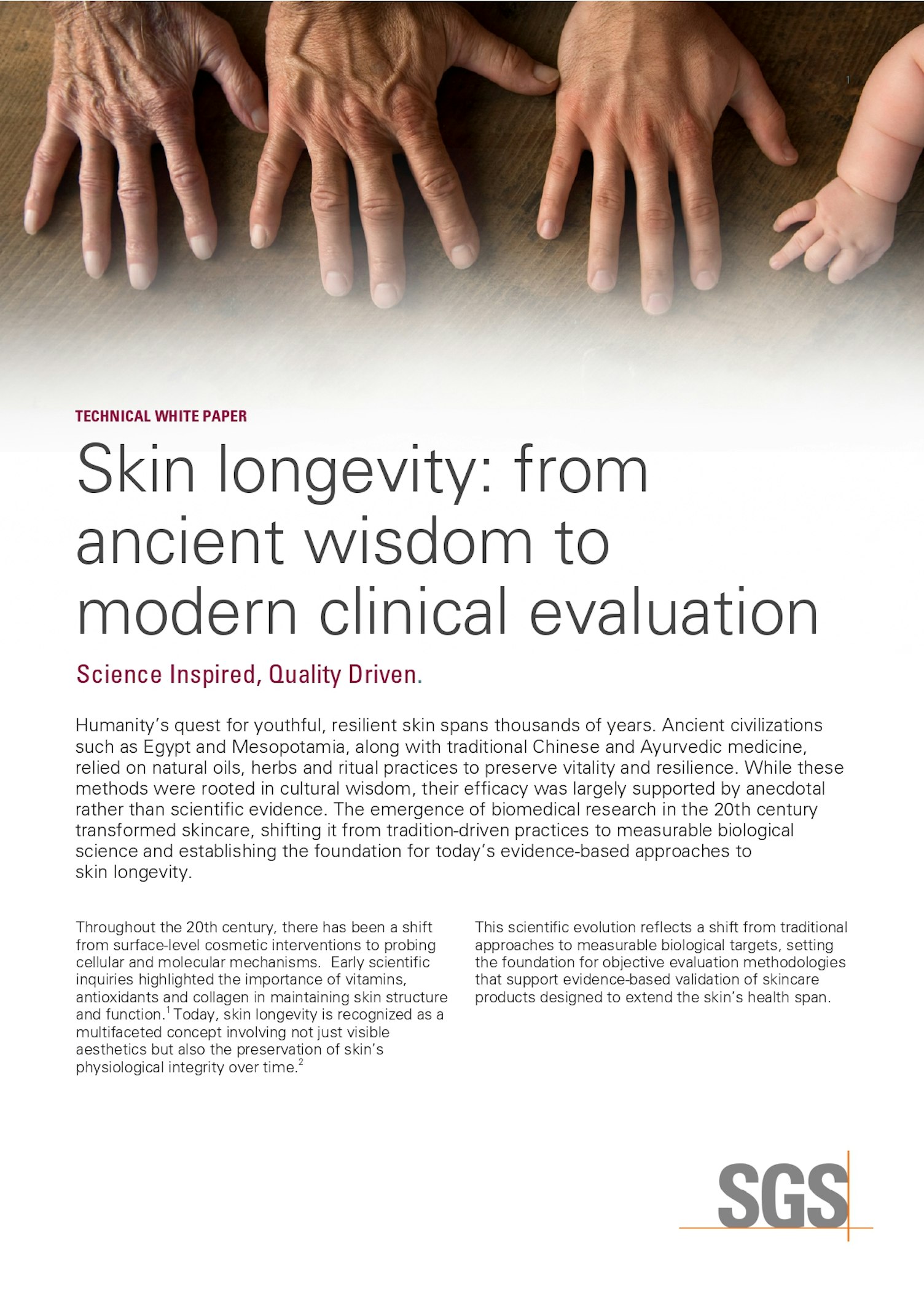Skin longevity is no longer defined by appearance alone; it reflects the ability of skin to maintain its structural integrity, physiological function and long-term resilience. Recent advances in biology and clinical science have transformed how we measure, analyze and validate interventions designed to target the visible and functional signs of aging. By integrating imaging technologies, biomechanical assessments, hydration and barrier measurements and biomarker analysis, researchers and developers can now generate objective, reproducible data that captures both skin health and its response to treatments.
This white paper examines the biological drivers of skin aging and modern non-invasive tools that provide reproducible, clinically relevant insights. It highlights how integrating these methods creates a robust framework for evidence-based claims substantiation, accelerated product innovation and enhanced regulatory and consumer confidence.

What you will find in our white paper
- Mechanisms driving skin aging
Understand how cellular senescence, oxidative stress, telomere shortening and hormonal shifts converge to influence skin function over time.
- Non-invasive tools for clinical evaluation
Explore advanced methods, including macro imaging, biomechanical testing, hydration and barrier function measurement and biomarker analysis.
- Building robust, multi-dimensional frameworks
See how combining visual, functional and molecular metrics improves data quality, reproducibility and regulatory relevance.
- Strengthening confidence in skin longevity claims
Learn how integrated clinical approaches provide objective, science-backed validation that supports innovation in dermo-cosmetic and pharmaceutical development.